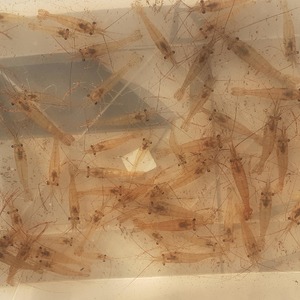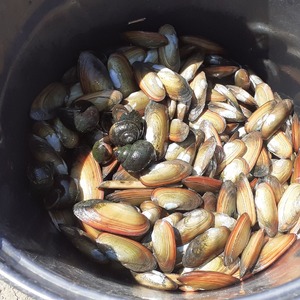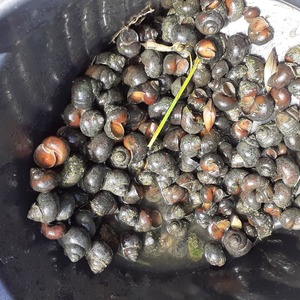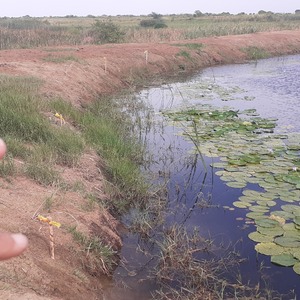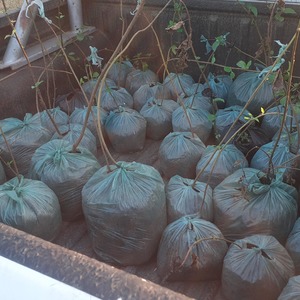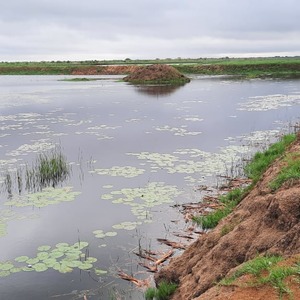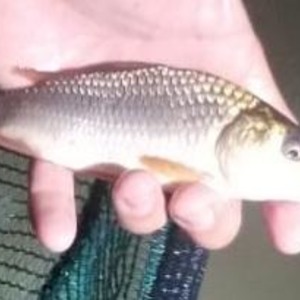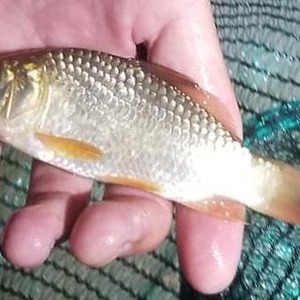An African Adventure | Part 2
A story of a fishery, where no fishery has been before... (Part 2)
I had the sensation of being like an over-excited kid on Christmas Eve . . . the baby carp had finally arrived, the fishery was being built, and life was rather rosy! I would nip down the road to feed the fish over my lunch hour, and after seeing them finally coming up and munching after four days, it was like discovering another cherry on a birthday cake. However, on the fifth day, I observed something not entirely ideal during my daily, midday visit.
As I approached the pond, there was a sudden disturbance amongst the reeds, immediately followed by a loud commotion at the water’s surface. "What the blooming Norah Batty was that?" I thought. I quickly scanned the water to see what was occurring, and halfway across the pool surfaced a rather large Nile Monitor Lizard! With a flick of its massive tail, it disappeared again in a flash. Thankfully, I saw it resurface at the opposite bank and scurry out of the vicinity. What an incredible creature. Unfortunately, it's not really what you want in a pond full of baby carp. These reptiles are one of the largest lizards in the world and grow to over 5ft in length. They have an insatiable appetite, eating almost anything in their way, including fish and even small crocodiles!
That evening, we discussed all things predation-proof, as Piet had also spotted some small kingfishers and a Black-headed Heron, the latter of which was ‘kindly asked to leave’ by Piet shouting some choice words in its direction. The next day, we purchased some fencing materials and line to stretch across the pond, and got busy trying to protect our aquatic livestock. I also put together a floating feed structure, so the pellets wouldn’t drift all over the pool.
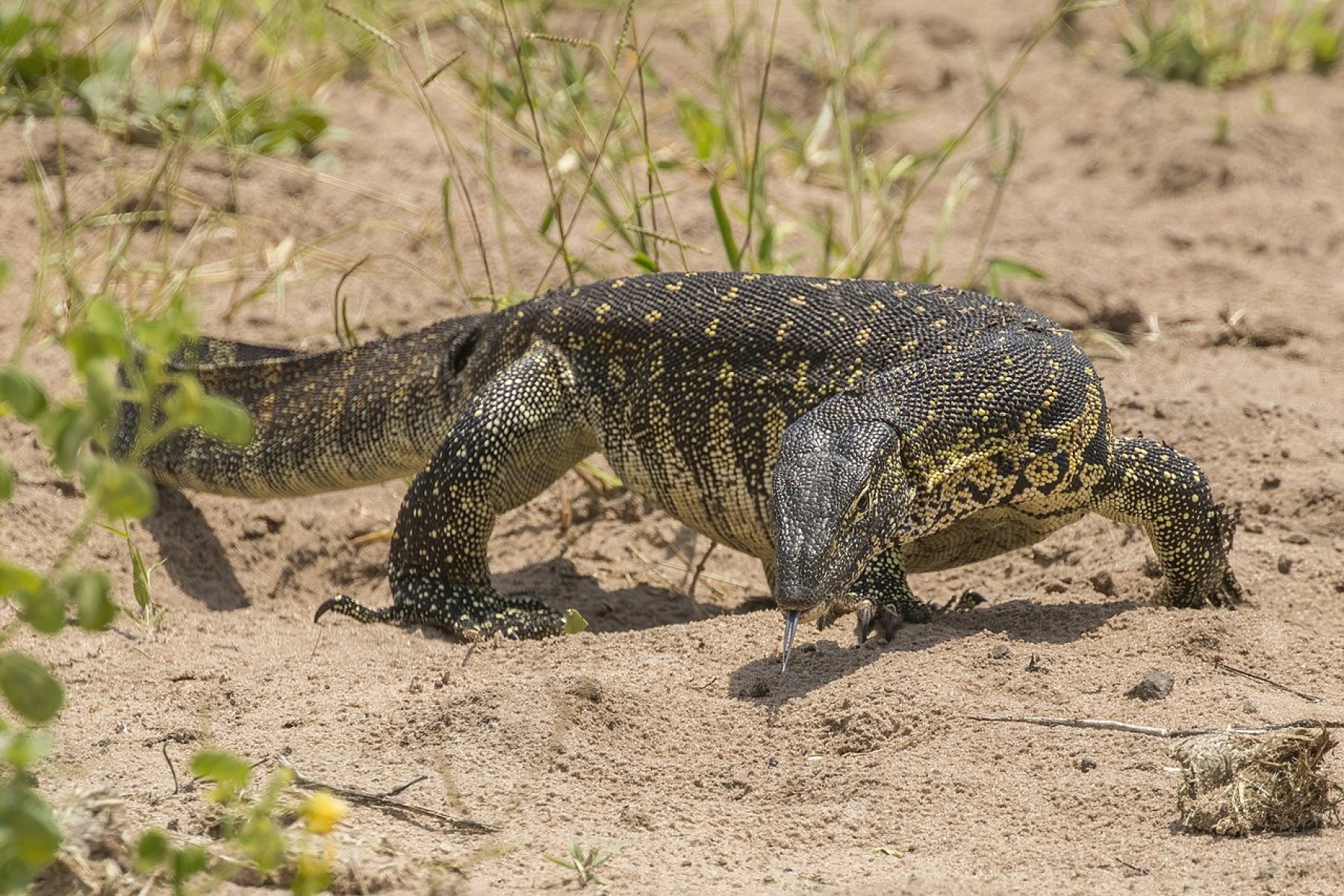
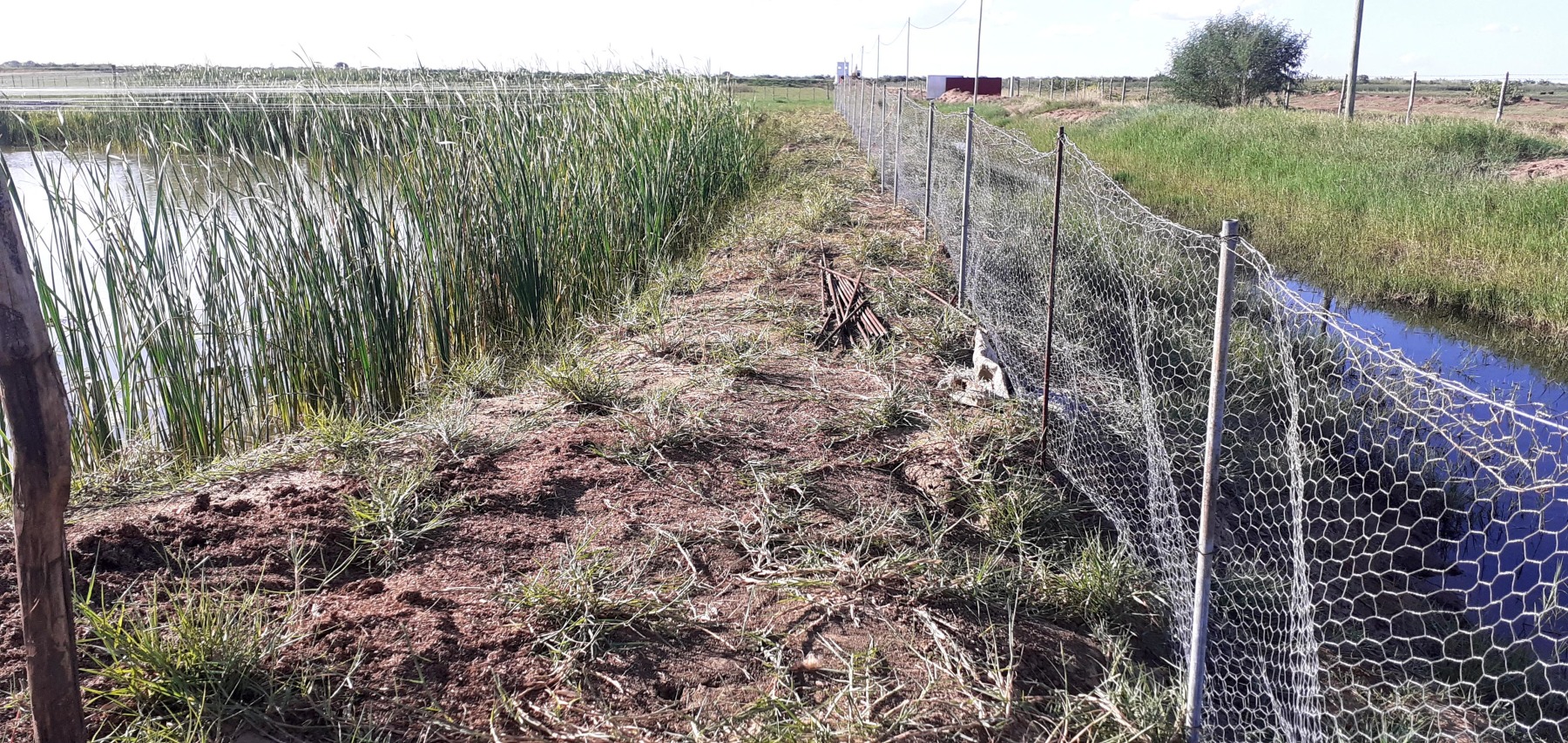
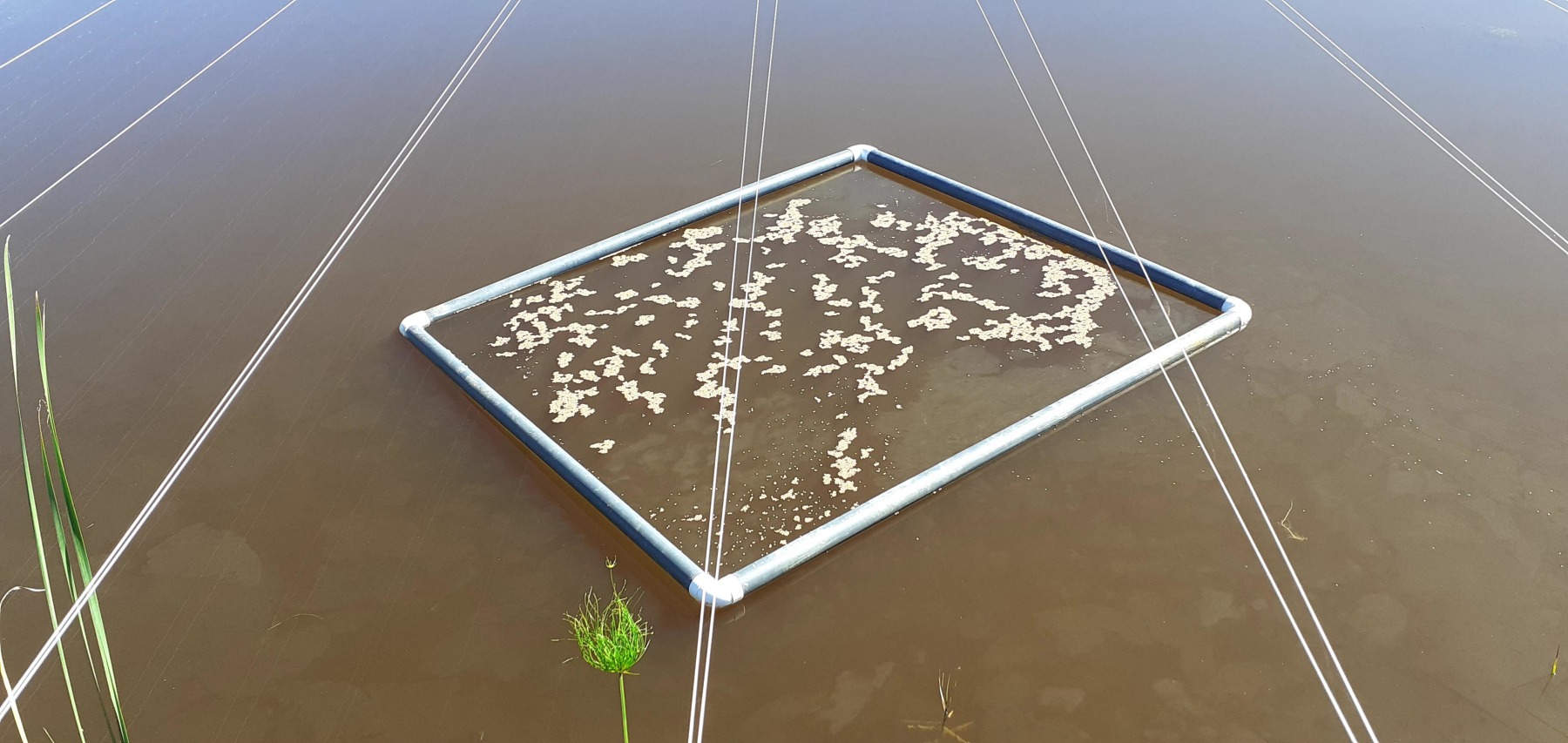
Welcome to the mundane world of fish farming!
While we encountered some early challenges with the grow-out pond, things were running rather smoothly in the creation of the two fishing dams. The excavators were busy building up the walls, and daily progress was visible. Over one weekend, I watched a YouTube video by Fox International at Old Mill Lakes and was inspired by the venue and particularly its islands.
Southern Africa is full of dams, most of which are generally quite plain in design. They are literally dammed up at one end and the low-lying land behind it is flooded. Not many sites are chosen with undulating topography, hence why you rarely find bodies of water with islands around this part of the world. I shared the video with Piet and the guys at the farm, and they were enthused by the idea and agreed that some islands must be built into the venue.
These features would not only create safe havens for a diverse variety of birds and wildlife, but they would also increase the amount of marginal area in the dam, where land meets water, and terrestrial and aquatic communities meet. These zonal edges, also known as ecotones, are often the most important part of the environment due to the greater diversity and abundance of species present. This richness is greater if a thriving population of plants is present, providing habitat for not only fish but an array of invertebrates (snails, shrimp, water fleas etc.), all of which carp love to feed on.
The dams were completed over the next couple of months, and they were joined together with one wall between them. The first dam was just over 12 acres, and the second one, which was destined to be the carp venue, finished up with 8.5 acres of surface area. The 12-acre dam had a land spit extending out into the middle of the water with an expanded round area at its end . . . slightly phallic, I know! The carp dam had five islands dotted around, and both bodies of water had deep channels in places where the excavators had moved earth to elevate the banks. Although pretty barren in its infancy, the dream was becoming a reality.
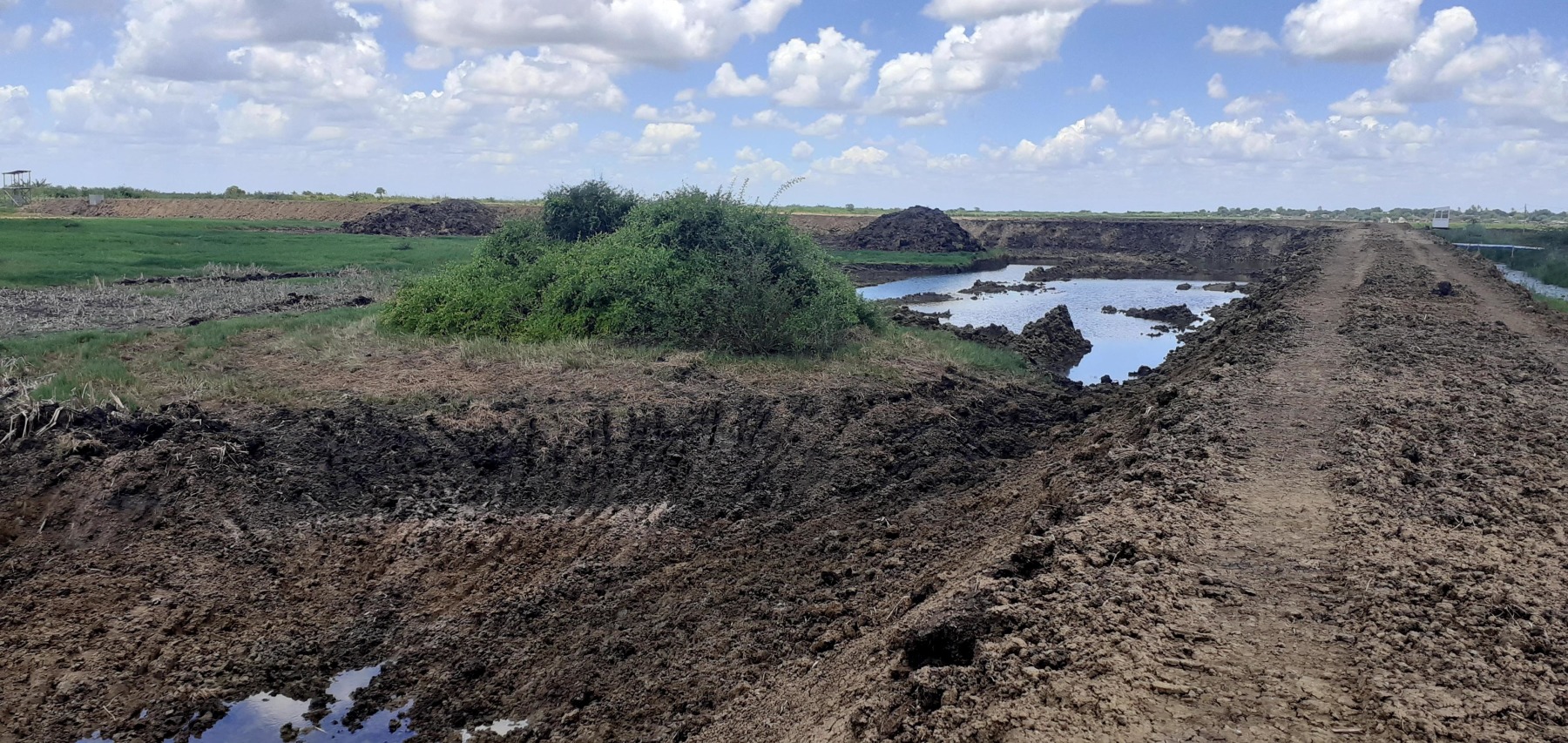
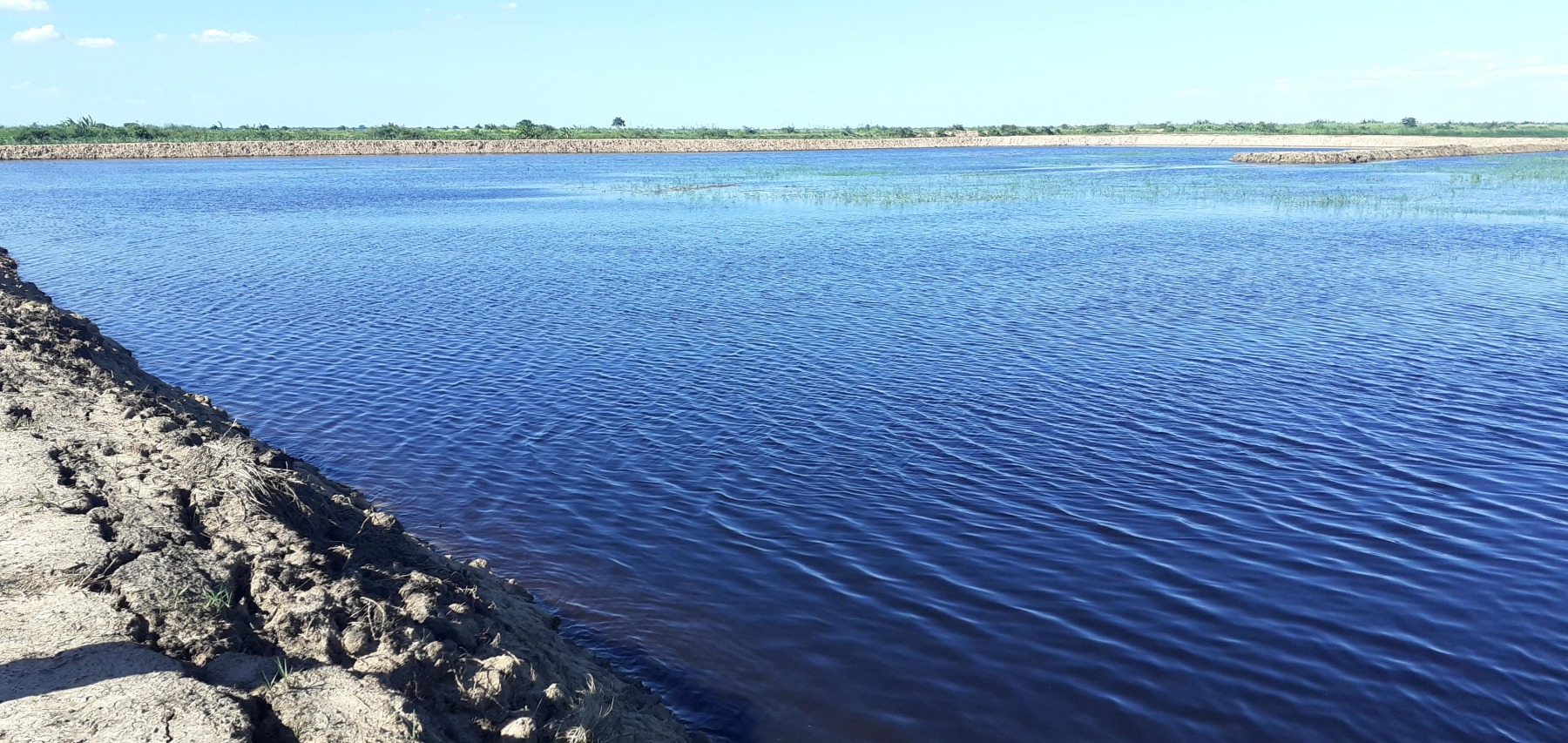
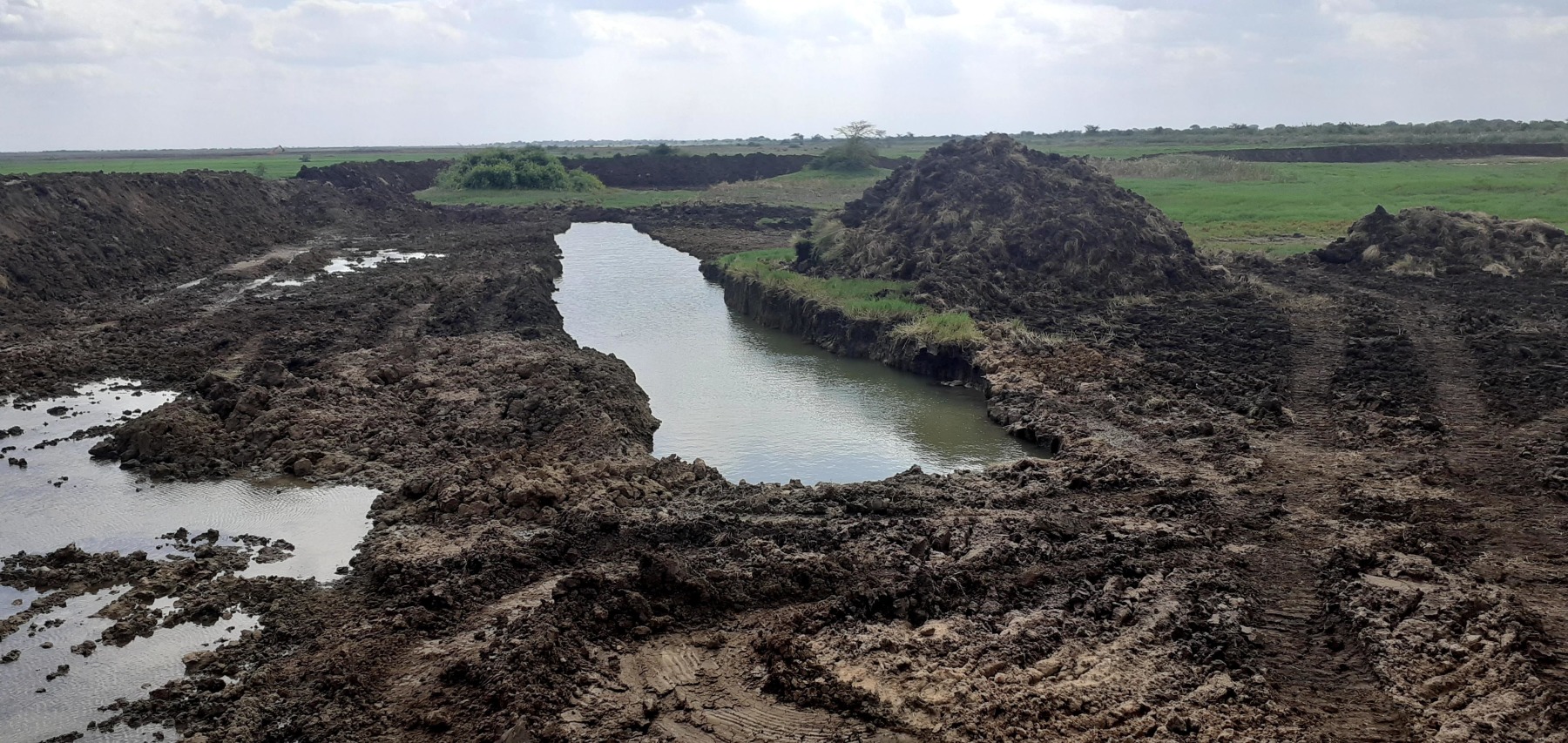
As the water started to fill both dams, it was now time to start the process of trying to develop thriving aquatic ecosystems. I had already done this with the grow-out pond, but now this was on a much larger scale! The plan was to leave the carp dam without fish for at least a year, allowing the ecosystem to flourish, so when we did stock our carp into the dam, they would have a habitat to thrive in.
I would collect as many freshwater mussels and snails from any of the production ponds at work when they were drained down. Then in my lunch hour, I would drive with a bucket full of goodies to the dams and start populating one corner at a time. I would visit a couple of local rivers searching for molluscs and shrimp. I found a shrimp fisherman who was catching a larger species than the tiny Caridina nilotica shrimps I had previously caught, so luckily I ended up buying 500 after a couple of visits.
Over a period of around four to five months, I managed to populate the carp dam with two species of mussels, five varieties of snails, and two types of shrimp. Literally tens of thousands of these ‘carp food’ items went in, along with native macrophytes, lilies, and marginal plants, which would provide habitat and shelter for these little critters to thrive. I think I had become slightly obsessed with enhancing the dam’s ecosystem, as these trips to the rivers were a two-hour round journey, often after a day’s work! However, I simply loved exploring and submerging myself (literally) into the surrounding nature, and it gave me an excellent opportunity to observe the different trees and plants growing at the various waters I would visit.
Up until this point, we hadn’t decided exactly what we wanted to achieve fishing-wise with the first, larger dam. As the venue had two dams, it would give us an opportunity to provide different fishing scenarios, rather than just specimen carp angling. During my regular river visits, I had seen several fishermen catch a few random Tigerfish with their throw nets, although they would quickly die once dumped into the bottom of their wooden boats. As I wrote before, I had experienced the thrill of catching these incredible indigenous predators at the massive dam some three hours’ drive away. These fish put on impressive aerial displays once hooked, and can reach over 20lbs in weight, making them one of the most coveted freshwater game fish in the world.
It was obvious now what we wanted to do with the first dam! This dam was perfectly set up for the roving angler as all areas were accessible from the bank and the extended island protruding into the middle of the water. Clusters of reeds had popped up around the dam, so there were features all around, ideal for throwing a lure to. There are literally hundreds of thousands of Nile Tilapia on-site at the farm, so these could be stocked for the pleasure angler, as well as becoming the main feed source for Tigerfish, ideal! I also needed some predators in the carp dam to ensure it never became overrun with baby carp. Now I just had to figure out a way to successfully transport them alive and kicking!
I hadn’t found any literature or information online about transporting Tigerfish, nor could I find any projects that had actually stocked Tigers. This was certainly going to be a challenge, but nothing ventured, nothing gained. I had a network of local fishermen from three different river systems, and if anyone managed to catch one, the instructions were to leave it in a bucket of water, in the shade, and message me as soon as possible. Between us, someone would go and collect these toothy predators. It’s important to understand at this point that these fish were destined for the cooking pot, so we were trying to ‘save’ these fish by stocking them into our dams.
On 7th August 2021, we managed to release the first live Tigerfish into the dam, a moment of great relief and satisfaction, especially since a couple of earlier efforts had failed somewhat miserably. It wasn’t a monster by any means, but it was a start. One down, ideally another 299 to go!
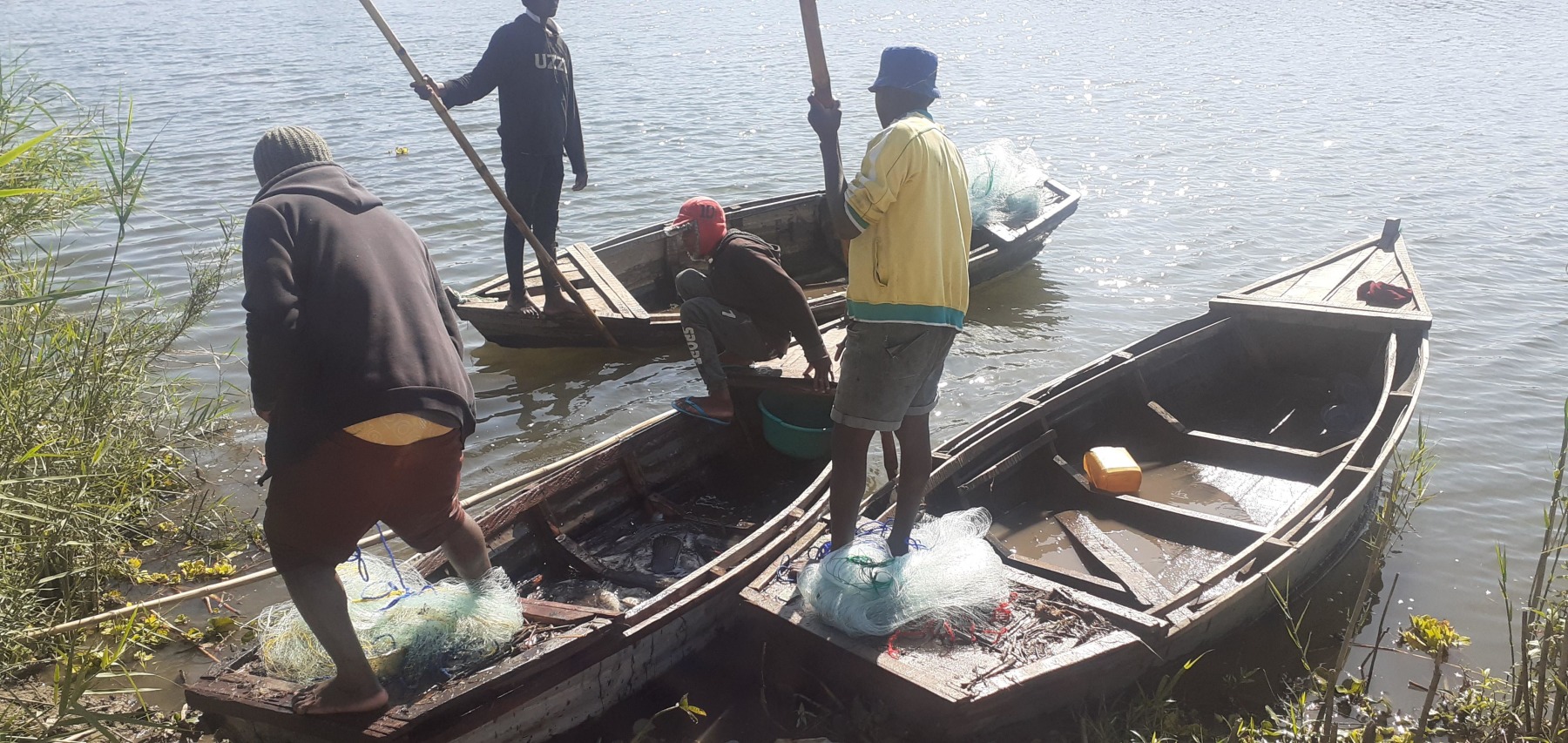
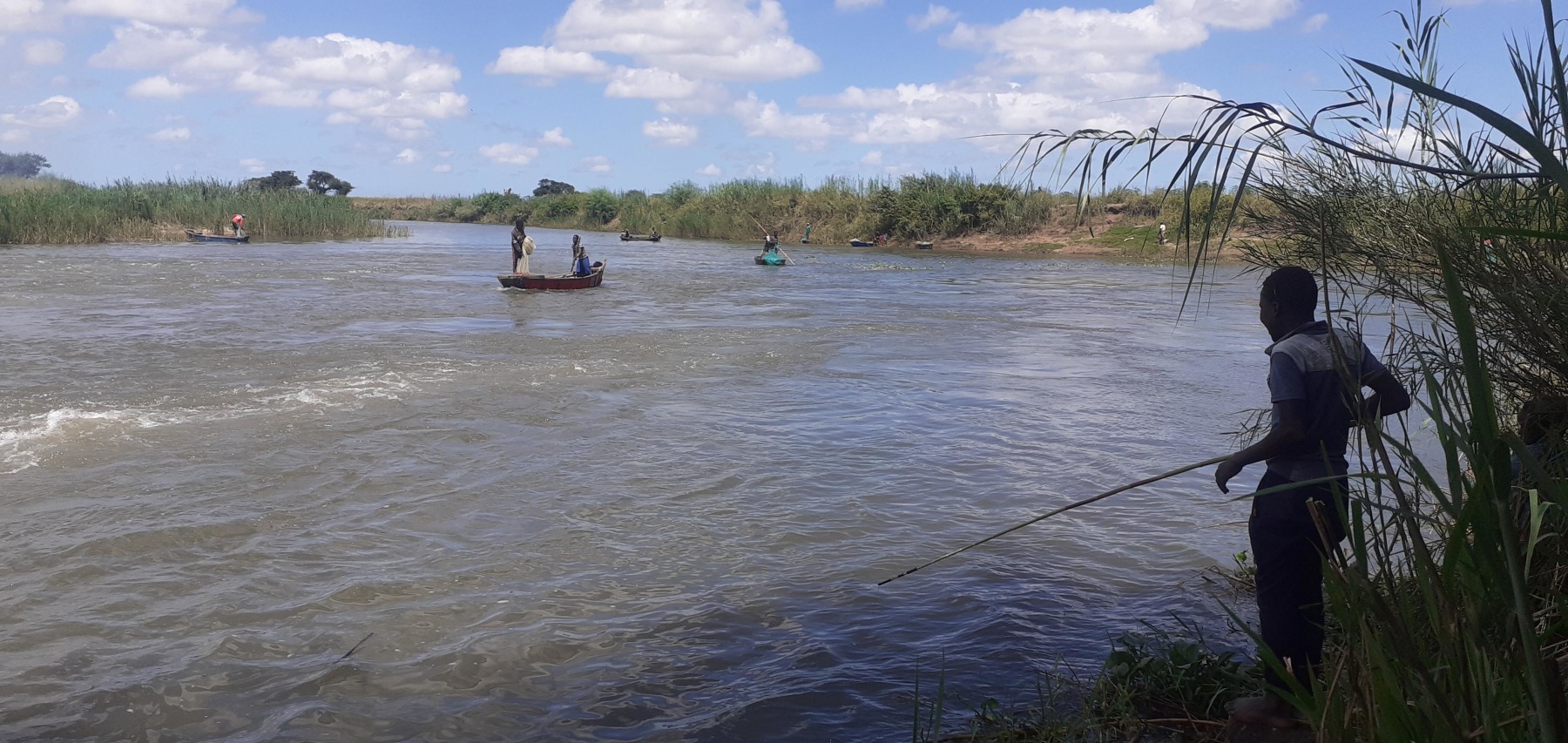
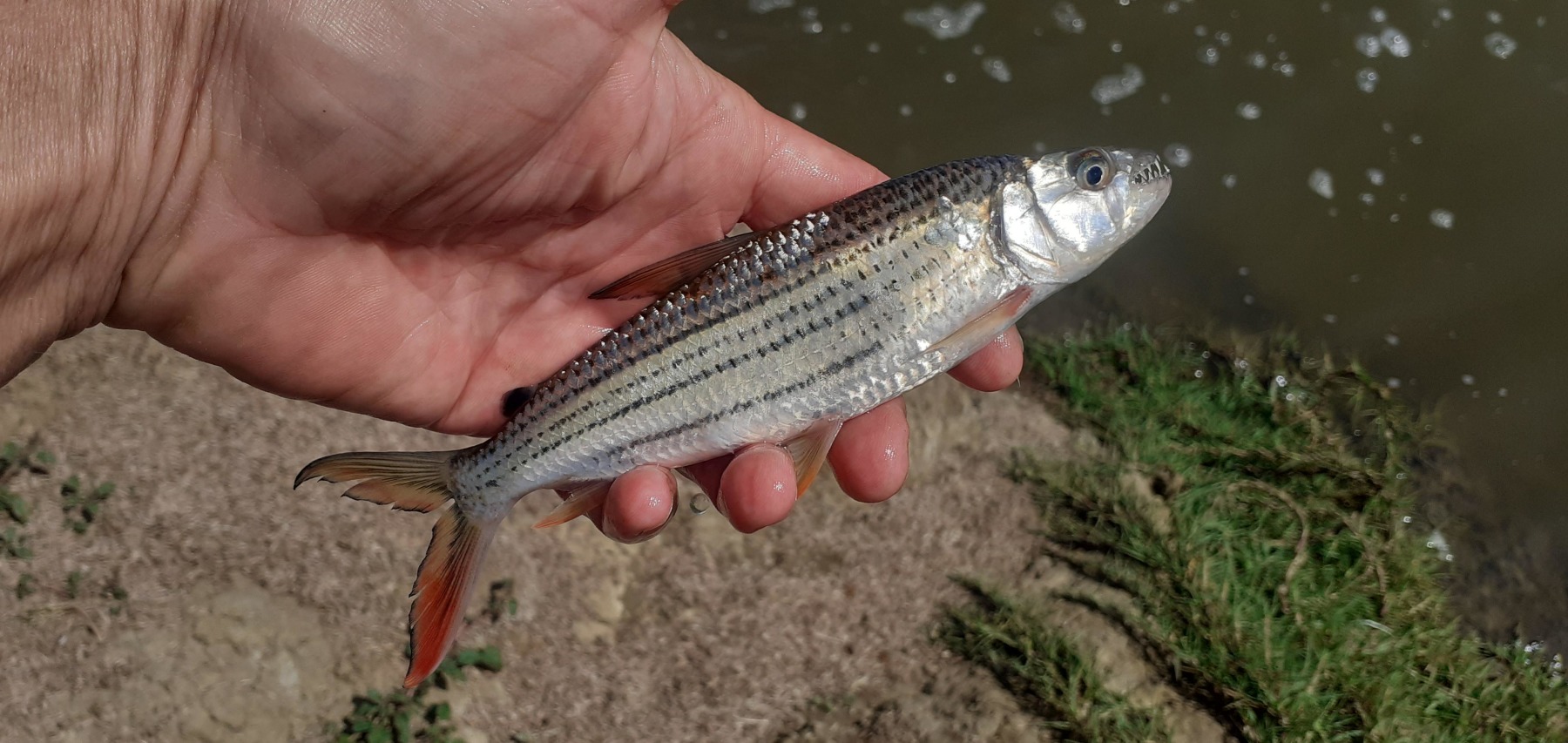
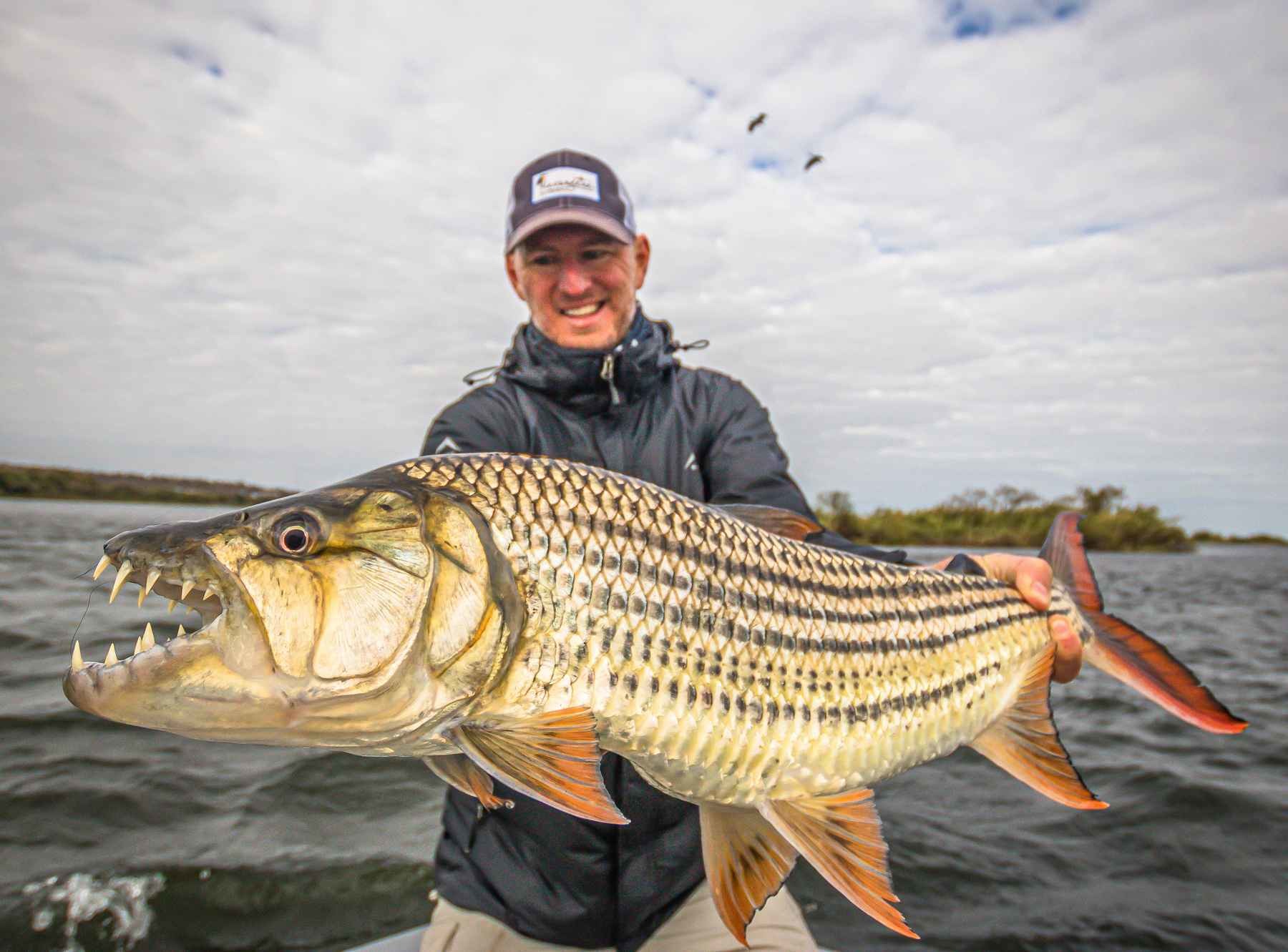
Based in the Southern hemisphere, our weather patterns are the opposite of Europe’s, and as September and October rolled in, the temperatures were beginning to rise. The warmer summer months are the growing seasons for fish and plants alike, so in early October, we began planting indigenous trees around the bare banks of the dams. The planting was tough work; digging holes in clay-rich soil in the African heat is not for the faint-hearted. As I also wrote previously, there simply aren’t garden nurseries around here selling native trees, so we had already been germinating seeds and rearing saplings for this phase of the project.
Our vision was to create a rich green oasis, replicating what we observed growing along the river banks and local ponds. These would provide much-needed shade for anglers and create a natural habitat for the abundant species of birds already visiting the dams. This would obviously take some time, but by planting only native trees, we knew they were in their perfect environment to prosper. We also had access to chicken manure from the farm, so we were confident we had a great growing combination.
In late November, I received an early Christmas present in the shape of 32 juvenile common carp. These weren’t just any old common carp, but had been bred from a female fish that had reached an almost unheard of 5kgs in 18 months. I’m not joking, as crazy as those figures sound. My original batch of carp were mostly mirrors, and I’d been keen to supplement the stock, so when these became available, I jumped at the chance to take some, especially considering their genetic makeup!
2021 turned into 2022, and with every new year brings excitement and expectations. However, things were not looking great on the Tigerfish front, and something had to change drastically. Over a six-month period of trying to successfully stock Tigers into the dams, we had reached a pitiful total of just 30 fish. At this rate, it would take us five years to reach our target of 300 fish!
A new plan had to be put into action if this was ever going to happen, and after much discussion and pondering, we formed an elaborate scheme that, if conducted properly, could solve our problem almost overnight. 15th January would be our D-day...
Dave Charley
WhatsApp: +258 845901250



